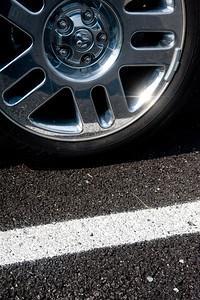
The parking lot serving newly renovated Bob Warn Field at Sycamore Stadium is paved with permeable asphalt, which allows rainwater to drain through the parking surface rather than run off into storm sewers.

The parking lot serving newly renovated Bob Warn Field at Sycamore Stadium is paved with permeable asphalt, which allows rainwater to drain through the parking surface rather than run off into storm sewers.
A new parking lot on the Indiana State University campus offers a more environmentally friendly approach to traditional construction.
While the lot serving Bob Warn Field at Sycamore Stadium may look like regular pavement, it is surfaced with permeable asphalt, designed to allow water to pass through to an underlying stone bed. The soil beneath the parking lot then absorbs the water which would otherwise run off after a rain, said Bryan Duncan, director of capital planning and improvements at Indiana State.
"This project will reduce the amount of storm water that goes into the city's combined storm and sanitary sewers, which are overburdened," Duncan said. "This the first permeable asphalt project in this area so the city of Terre Haute is keeping a close eye on the technique for possible use elsewhere."
Because it serves a baseball field and is not used year-round, permeable asphalt makes sense for the Sycamore Stadium lot - from a maintenance standpoint as well as an environmental one. The construction method results in few cracks and potholes because the stone bed foundation provides a strong base for the pavement, Duncan said.
With conventional pavement, storm water flowing across the surface picks up contaminants that are carried directly to the soil, but permeable asphalt allows for natural filtration of the water.
However, permeable asphalt is best used in low traffic areas because it has a lower load-bearing capacity than conventional asphalt.
While the cost of surfacing a parking lot, street or driveway is comparable to conventional methods, use of permeable asphalt eliminates the need to build costly curbs and gutters or dry wells to hold water, Duncan said.
"We are looking into the use of permeable asphalt in other low traffic areas of campus. It can be economically attractive and is just one more ‘green' construction method that can help the university meet its commitment to environmental sustainability," he said.
Photos: http://isuphoto.smugmug.com/photos/950487421_KFZXu-L.jpg - A new permeable asphalt parking lot serving Bob Warn Field at Sycamore Stadium is the first use of the technology on the Indiana State University campus or the city of Terre Haute.
http://isuphoto.smugmug.com/photos/950487984_UBu7P-L.jpg - Permeable asphalt, such as this parking surface at Indiana State University's Bob Warn Field at Sycamore Stadium, is constructed with larger aggregate than conventional asphalt to allow rainwater to drain rather than run off into storm sewers.
Contact: Bryan Duncan, director of capital planning and improvements, Facilities Management, Indiana State University, 812-237-8195 or bryan.duncan@indstate.edu
Writer: Dave Taylor, media relations director, Office of Communications and Marketing, Indiana State University, 812-237-3743 or dave.taylor@indstate.edu